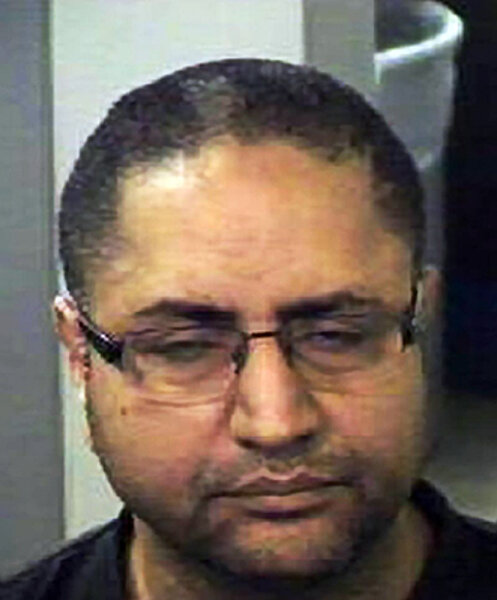Monitor report: Charged with murder, Indian Army officer got passport, fled to US
Loading...
When an immigrant in California this summer shot his wife, three children, and then himself, it left the small town of Selma, outside Fresno, searching for answers. The case quickly took on international importance – and raised more questions – when it emerged that the gunman, a former Indian Army major, was a fugitive from India, wanted for a wartime murder in Kashmir.
Newly released information reveals that the Indian government issued a passport used by the fugitive, Avtar Singh, to flee to Canada and eventually settle illegally in California. This was done despite an earlier Indian court order to prevent his leaving the country.
Mr. Singh was wanted by an Indian court to face charges for the 1996 murder of Jaleel Andrabi, a prominent human rights lawyer in Kashmir. Fearing Singh was a flight risk, the court in Kashmir ordered the Indian government in 1997 to impound or deny any passport for him.
How Singh had managed to flee has remained a mystery, one that is now partly answered. In response to a Right to Information request about when and where Singh obtained a passport, India’s Ministry of External Affairs revealed late last month that a government passport office issued him the document in 2001.
A top Indian bureaucrat claims the government followed proper procedures in issuing the passport. But the Indian judge whose order was broken argues that the case highlights a lack of respect for the rule of law in the world’s largest democracy.
“If we followed rule of law, even in Kashmir, many, many problems would get automatically solved. You must have trust in the systems that you have created,” says retired Justice Bilal Nazki.
No extradition, no deportation
US immigration officials first discovered Singh living illegally in California in 2007. They started a deportation process that was still pending at the time of his murder-suicide.
In February 2011, police in California arrested Singh for trying to choke his wife, and in the process discovered an Interpol warrant for his arrest from the Indian court in Kashmir. But despite repeated calls to India from police in the US, the Indian government never issued an extradition request to get Singh back, so he was released.
“If it were the reverse, where a Kashmiri was wanted for killing a major of the Indian Army, you’d have to think the extradition request would be filed by now,” says Govind Acharya, India country specialist for Amnesty International USA.
In an interview last year with the Indian magazine Open, Singh threatened that “if the extradition does go through, I will open my mouth.” The Associated Press this summer quoted Singh’s immigration consultant, Charles Stephens, as saying: “He told me, ‘My job in India was to eliminate terrorists who were against the Indian government. I was good at that, they never found the bodies when I did it.’”
Security forces and insurgents both committed human rights abuses in Kashmir during a separatist uprising there by Kashmiri and Pakistani militants in the 1990s. The Indian government now admits that thousands of bodies lie in unmarked graves in Kashmir, but this month ruled out wide-scale DNA testing sought for by families of the missing. Among the reasons cited in a government report, obtained by the Associated Press, were fear of media attention and the potential for stirring up unrest.
Meanwhile, no Indian soldier has been tried in a civilian court for human rights abuses in Kashmir, making Singh’s case potentially an unwanted precedent for the military.
“I think because it was too difficult for the military to contemplate one of their own standing trial for this murder that I just am not surprised that he was able to get a passport,” says Mr. Acharya.
The government’s response
India’s chief passport officer, Muktesh Pardeshi, says government records from 2001 show that Singh presented the proper paperwork to a regional office in Chandigarh. Authorities there – not in Delhi – granted him a passport, his first, valid for 10 years.
According to Mr. Pardeshi, the senior superintendent of police in Ludhiana, a nearby city where Singh then resided, issued him a “no objection certificate,” indicating he had a clean record. He also obtained a similar certificate from his commanding officer, Col. R. K. Goyal, as required of members of the military. Both certificates stated there was no court case pending against Singh, says Pardeshi.
The Monitor was unable to locate Goyal.
“If there was something from the [Kashmir] court in ‘97, and if the police authorities cleared that, they would be aware if there was some court order,” says Pardeshi. “I can’t believe that in ‘97 a court had said something and the military establishment didn’t look into this, because that would have amounted to contempt of court.”
Hafizullah Mir, the lawyer representing Mr. Andrabi’s survivors, says the family intends to file a contempt motion. He charges the government orchestrated Singh’s escape.
Justice Nazki, meanwhile, dismisses the idea that somehow the government wasn’t notified of his order.
“A court order went to all concerned,” he says. “The government of India was a party to that case.”
The Right to Information request, relayed by Kashmiri anticorruption activist Muzaffar Bhat, also led to the release of a government memo, written in April 2011 by the Ministry of External Affairs’ extradition division in Delhi and sent to the office of Subhash Chhibber, who at the time served as the deputy secretary in Kashmir's home department.
The memo indicates that Delhi had received paperwork from Kashmir needed for India to make a formal request to the US for Singh's extradition. But the memo goes on to say that Delhi had returned the paperwork to Kashmir, noting various discrepancies and insufficiencies that failed to comply with US-India rules for extradition.
In other words, the memo suggests that the messages over Interpol sent by US police in 2011 had indeed reached India, and that an official in Kashmir had worked on extradition request. But India's extradition bureaucrats in Delhi found fault with how the paperwork was filled out, effectively blocking the extradition request until its discrepancies were addressed.
Reached by phone, Mr. Chhibber says of the case: “I forget completely because I was transferred [to another department] for last one year.” Another effort to get comment from Kashmir's home department was rebuffed.
Sad case for human rights
Acharya speaks of the case – his first with Amnesty International USA – with defeat. Years ago, he was charged with keeping two US chapters motivated to continue writing letters to the Indian government, urging justice for Andrabi.
For a time, the US State Department applied pressure as well, noting the case for a few years in its annual country-specific human rights reports.
The 2002 report leads into Singh’s case noting: “Court action in cases of extrajudicial killings was slow and uncertain.” (Later, the US would also prove slow in action, failing to deport Singh after a five-year process and further criminal behavior.)
Indian forces in Kashmir enjoy broad immunities from civilian courts under the controversial Armed Forces Special Powers Act. The law remains in place today in Indian-controlled Kashmir despite the crushing of the armed militancy a decade ago and calls from rights groups like Amnesty to remove it.
Singh’s case made it to civilian court because the Indian military did not claim the killing as an authorized action, says Acharya. But, he adds, Singh might have gotten away thanks to the duality of modern India, a state with a robust legal system on paper but one that can be manipulated by the corrupt and the powerful.
“On the surface, you have this liberal democracy with all these protections. But then you realize on the other side of this you have this undemocratic side … this whole illegality that just goes on as the way the country runs,” says Acharya.
Cases like Singh’s must be confronted, he adds, to get India to “use the mechanisms that are in place in theory to actually further human rights.”







